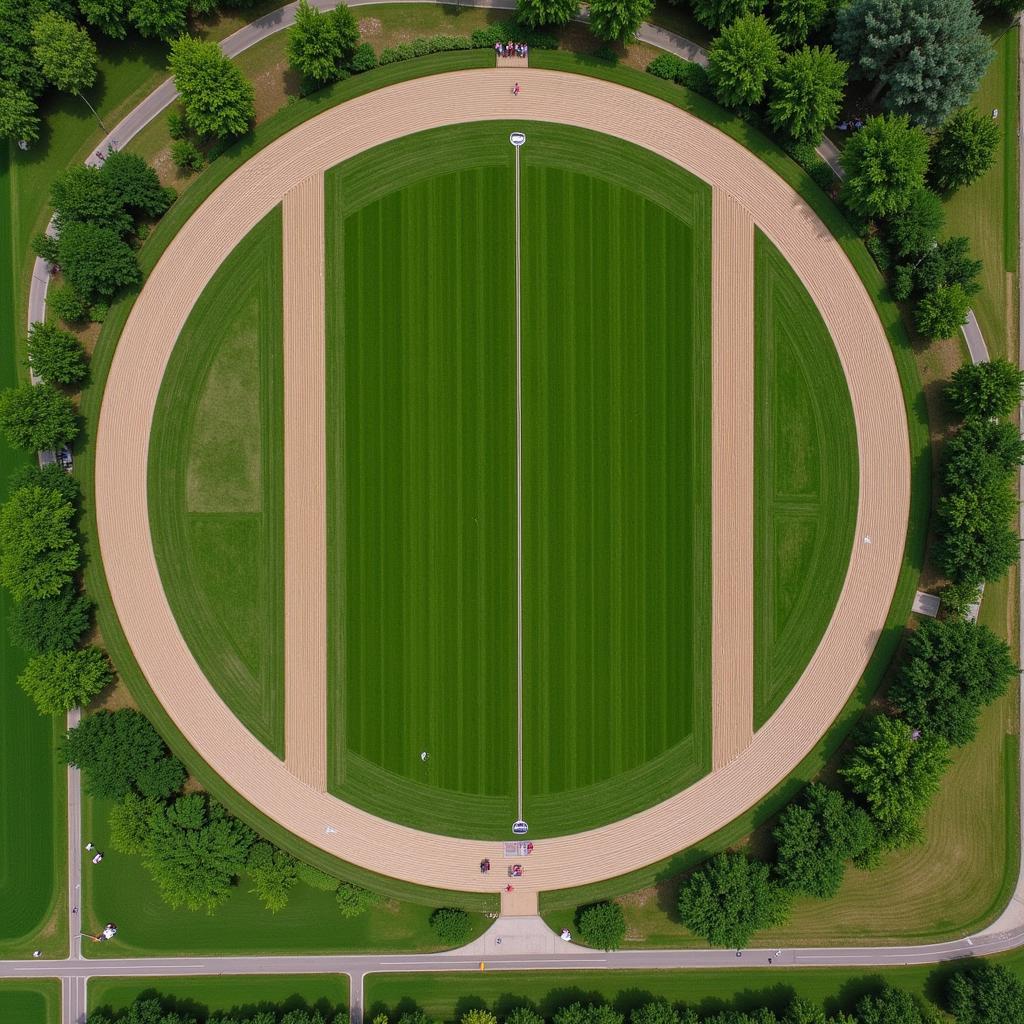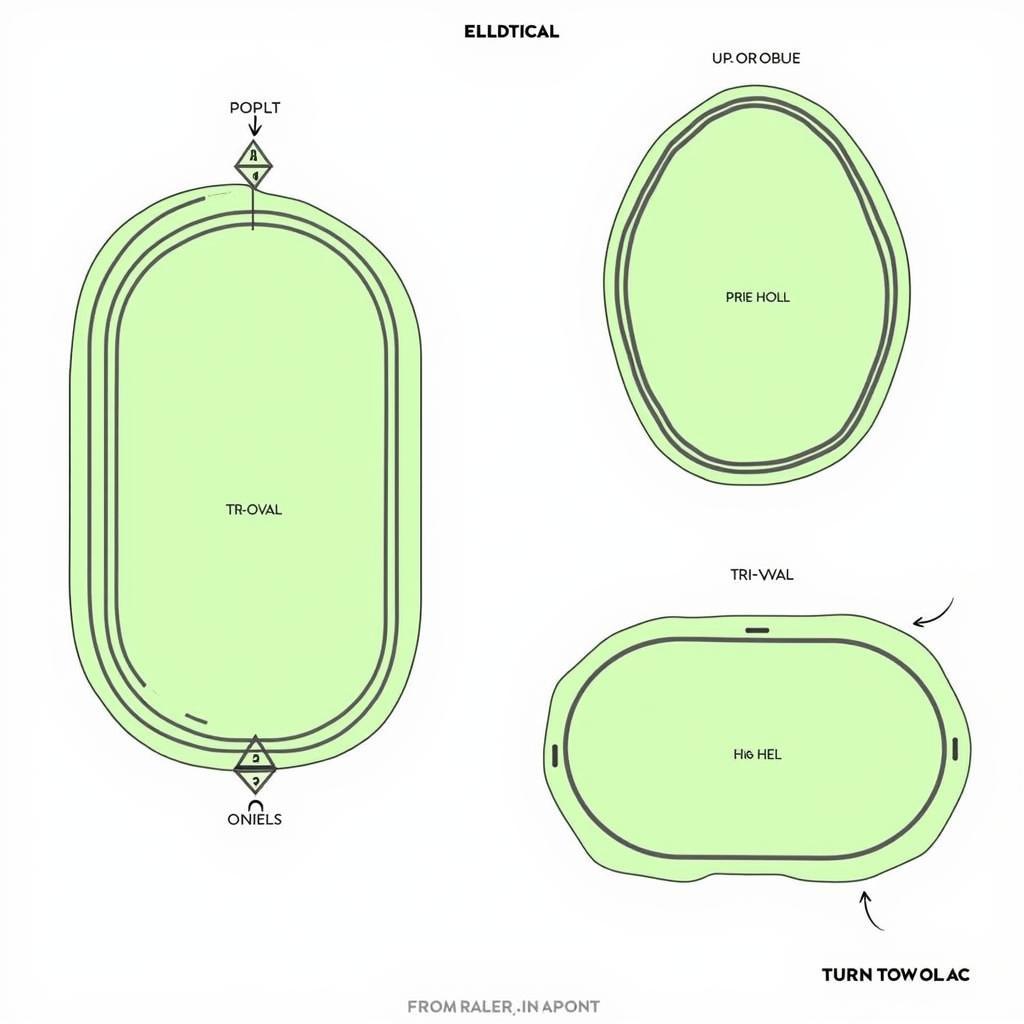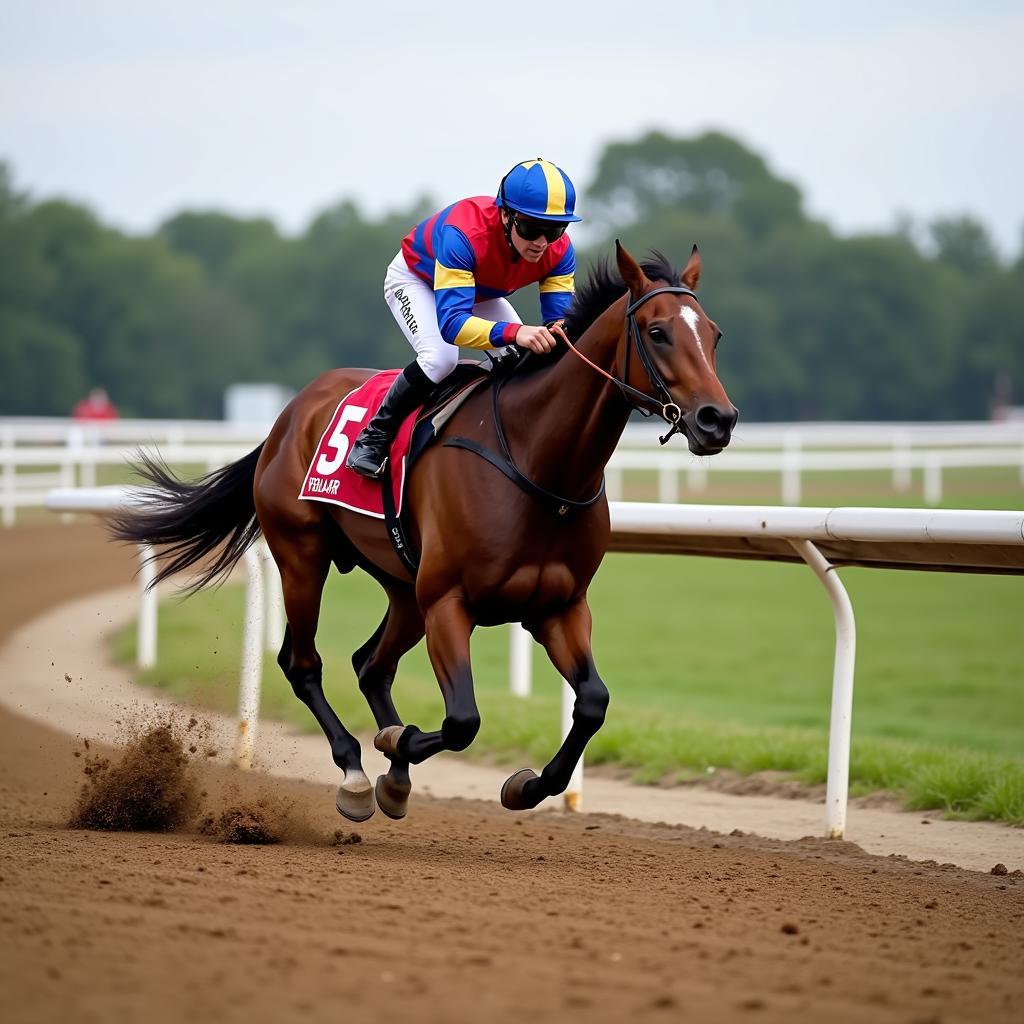Horse racing is a thrilling sport with a rich history, captivating audiences worldwide. Whether you’re an experienced equestrian or simply intrigued by the grace and power of these magnificent animals, understanding the nuances of horse racing adds another layer of appreciation. One crucial aspect often overlooked is the track itself, particularly its dimensions. The size and shape of a horse track significantly influence race dynamics, impacting everything from a horse’s stride to strategic decisions made by jockeys.
This comprehensive guide delves into the intricacies of Horse Track Dimensions, exploring the variations and their effects on this exhilarating sport.
What are the Standard Horse Track Dimensions?
While there’s no universally standardized size for horse tracks, certain dimensions are prevalent in the racing world. Most tracks are either oval or elliptical, with the inner rail defining the track’s shape and length.
- Length: Typically ranges from 1 mile (8 furlongs) to 1.5 miles (12 furlongs).
- Width: Varies considerably, generally falling between 40 to 90 feet.
It’s important to note that these are just averages, and variations exist based on the track’s location, history, and the types of races it hosts.
Factors Influencing Horse Track Dimensions
Several factors contribute to the specific dimensions of a horse track:
- Terrain: Natural landscapes influence the layout, with some tracks built around existing hills or water features.
- History and Tradition: Some tracks retain historical dimensions, preserving a connection to the sport’s past.
- Race Types: Different distances and racing surfaces (dirt, turf) call for specific dimensions to ensure fair competition.
- Spectator Capacity: Larger tracks with greater seating capacity often have larger footprints.
 Aerial view of an oval horse track with marked dimensions
Aerial view of an oval horse track with marked dimensions
The Impact of Track Dimensions on Horse Racing
The dimensions of a horse track have a profound effect on race dynamics, influencing:
- Distance: Longer tracks demand greater stamina, favoring horses with a strong late kick. Shorter tracks, on the other hand, often result in faster-paced races where early speed is key.
- Turns: Tighter turns on smaller tracks require horses to adjust their stride and maneuvering, putting a premium on agility. Horses that excel on wider tracks with sweeping turns may find themselves at a disadvantage on tighter courses.
- Racing Surface: The composition and maintenance of the track surface—dirt, turf, or synthetic—impact a horse’s footing and overall performance. Some surfaces favor certain running styles, adding another layer of complexity to the equation.
Common Horse Track Configurations
Several track configurations are prevalent in horse racing, each with its unique characteristics:
- Oval: The most common type, featuring two straights of equal length connected by two semicircles.
- Elliptical: Similar to an oval but with a more elongated shape, creating longer straights and wider, sweeping turns.
- Tri-Oval: A variation on the oval, adding a third turn to create a more triangular shape. This design can result in a more challenging course for horses.
 Diagram illustrating different horse racing track configurations
Diagram illustrating different horse racing track configurations
Navigating the Turns: A Jockey’s Perspective
For jockeys, understanding the intricacies of a track’s dimensions is paramount. They must factor in:
- Banking: The degree of incline on turns, higher banking allows for greater speed but also increases the risk if a horse veers off course.
- Track Bias: Some tracks exhibit bias, where certain lanes or racing lines favor horses. This bias can shift based on weather conditions and track maintenance.
“Knowing the track is like knowing your dance partner,” says veteran jockey Carlos Silva. “You have to feel the rhythm, anticipate the moves, and adjust your strategy accordingly.”
Beyond the Basics: Unique Track Features
While standard dimensions provide a framework, some tracks boast unique features:
- Chutes: Extensions added to the main track, creating different starting points for races of varying distances.
- Hills: Some tracks incorporate natural or man-made hills, adding an extra challenge for horses and influencing race strategy.
- Obstacles: Steeplechase tracks feature obstacles like fences and water jumps, demanding a specialized skill set from both horse and rider.
 A jockey expertly guides his horse through a tight turn on a dirt track
A jockey expertly guides his horse through a tight turn on a dirt track
Horse Track Dimensions: A Key to Understanding the Sport
Whether you’re an avid bettor, a passionate equestrian, or simply fascinated by the world of horse racing, understanding the significance of track dimensions enhances your appreciation for this timeless sport. From the sweeping turns of a classic oval to the challenging hills of a unique course, each track tells a story, shaping the outcome of races and adding layers of excitement to every competition.